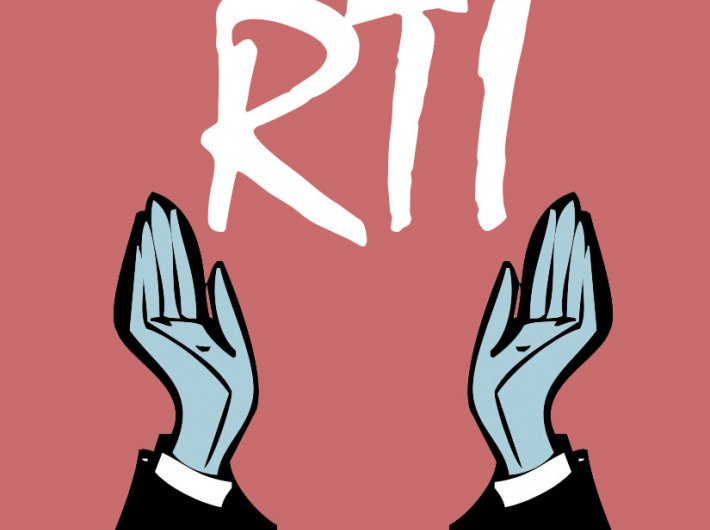Most of the district websites do not display any information about their annual budgets
The J&K Right to Information Act (J&K RTI Act) enters its ninth year of implementation. A study of the official websites of 230 public authorities under the J&K government conducted by J&K RTI Movement and CHRI reveals that compliance with the requirement of proactive disclosure of information under Section 4(1)(b) of the J&K RTI Act remains poor.
What is proactive information disclosure under Section 4 of the J&K RTI Act?
Section 4(1)(b) of the J&K RTI Act makes it compulsory for all public authorities to place a wealth of information in the public domain. This includes detailed information about their organization and functions, powers and duties of their officials, rules, regulations, norms and manuals that must guide their work, details of decision-making processes, budgets and expenditure, subsidiary programmes implemented, authorisations and permits issued and a list of all records held in paper or electronic form. Additionally, every public authority is required to publicise relevant facts about all important policy matters or decisions it takes, from time to time. Every person who is affected by any decision of a public authority has the right to be informed of the reasons behind such decisions. Section 4(2) of the J&K RTI Act explains that the purpose of proactively disclosing all this information is to reduce people’s need to seek information by filing formal RTI applications. A deeper examination of the scheme of the J&K RTI Act indicates that proactive disclosure of information is prioritized over reactive disclosure i.e., supplying information against formal RTI applications.
Key findings from the Rapid Study conducted by J&KRTI Movement and CHRI
Key findings from a rapid study of the official websites of the two Divisional Commissioners, the administration of 22 districts and 206 departments, autonomous bodies and other public authorities are as follows:
- The DivComs and all districts have official websites. 59% of the districts have not uploaded Section 4(1)(b) information to a reasonable degree of compliance on their official websites. They are either incomplete or not published at all.
- 3/4ths of the district websites do not display any information about their annual budgets. Only the district administrations of Bandipora and Budgam have displayed the latest budget-related information for 2016-17.
- The Kargil district website is the best of all district websites included in this Rapid Study. Detailed information about the working of the Deputy Commissioner’s office and other departments in the district has been published in compliance with the J&K RTI Act. Udhampur seems to be the only district administration to display the physical verification reports of the developmental projects undertaken under various developmental programmes up to 2016.
- Some districts have nevertheless taken innovative steps to display other categories of information proactively. Doda district website displays property statements of the officials of the DC’s office, and the Tahsildars and the total number of various types of ration cards issued by the administration, Tahsil-wise. Websites of Samba, Rajouri and Pulwama display the number of complaints received under the J&K Public Services Grievances Act, 2011. However this information is also not regularly updated.
- More than 15% of the remaining 209 public authorities (other than DivComs and District Administration) in J&K covered by the study do not have websites. As many as 4 out of every 10 of the 177 public authorities with official websites do not display any information required to be proactively disclosed under Section 4(1)(b) of the J&K RTI Act. Compliance is only 57.62%;
- 19.2% (32) of the public authorities have not displayed any details regarding the PIOs and FAAs designated by them for dealing with RTI applications and first appeals.
- More than 3/4ths (138) of the public authorities with websites have not displayed budget-related information. Only two public authorities have displayed budget related information for the latest year i.e., 2017-18 (namely, Finance Dept. and the Directorate of Audit and Inspections). Six of the remaining public authorities have displayed budget related information for the year 2016-17 (namely, the Directorates of Horticulture and Animal Husbandry, the J&K Legislative Assembly, the J&K Legislative Council, IMPA and Sher-e-Kashmir University of Agricultural Sciences and Technology).
- Under the section relating to budget and expenditure, the website of the Chief Minister’s Secretariat states as follows:
“Chief Minister’s Secretariat does not have budget allocation for any programme nor it has any agency under its direct control.”
However, the budget document uploaded on the website of the Finance Department displays the following sums of money allocated to the Council of Ministers and the CM’s Secretariat in 2017-18:
i) Council of Ministers (Voted): Rs. 752.80 lakhs;
ii) CM’s Secretariat- GAD: Salary, travel expenses, Medical reimbursement grant- Rs. 54.80 lakhs; and
iii) CM’ Secretariat- GAD: Secret Services expenses: Rs. 1,500 lakhs.
This Rapid Study is an outcome of the Internship Programme that CHRI hosted at its New Delhi office for Adv. (Ms.) Syed Iram Quadri and Adv. Bilal Ahmed Bhat, members, J&K RTI Movement (J&K RTI Movement) and the School for Rural Development and Environment (SRDE), from 01-28 February, 2017. CHRI and J&K RTI Movement have compiled this preliminary report.

